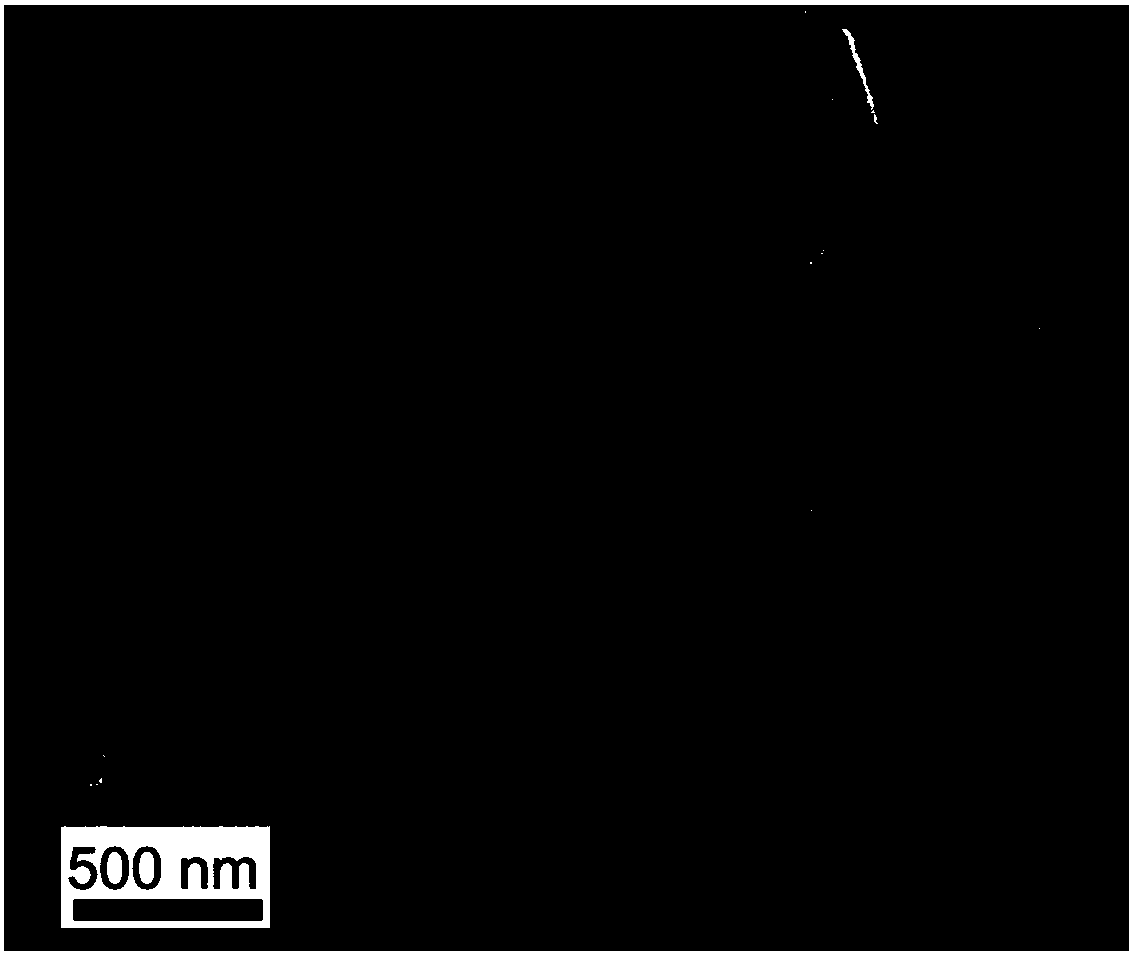Method for preparing homogenous barrier layer/frame structure by means of titanium tetrachloride hydrolysis and application thereof
A skeleton structure, titanium tetrachloride technology, applied in nanotechnology, photosensitive equipment, nanotechnology, etc. for materials and surface science, can solve the problems of easy recombination of photoelectrons and low electron transmission efficiency, and shorten electron transmission The effect of uniform distance, barrier layer thickness, and increased optical path length
- Summary
- Abstract
- Description
- Claims
- Application Information
AI Technical Summary
Problems solved by technology
Method used
Image
Examples
specific Embodiment approach 1
[0037] Specific implementation mode 1: This implementation mode is a method for preparing a homogeneous barrier layer / skeleton structure by hydrolysis of titanium tetrachloride, which is specifically completed according to the following steps:
[0038] 1. Ultrasonic cleaning the conductive substrate in toluene, acetone, absolute ethanol and deionized water in sequence, then rinsed with absolute ethanol for 2 to 4 times, and finally dried with nitrogen to remove the oil on the surface to obtain a clean conductive substrate;
[0039] Second, the use of TiCl 4 Preparation of barrier layer by hydrolysis:
[0040] ①. Prepare a titanium tetrachloride aqueous solution with a concentration of 20mmol / L-60mmol / L in an ice-water bath, seal it, and stir it under an ice-water bath at a stirring speed of 50r / min-80r / min for 1h-3h to obtain a barrier layer solution ;
[0041] ②. Fix the conductive surface of the clean conductive substrate in the beaker with the conductive surface facing do...
specific Embodiment approach 2
[0058] Embodiment 2: This embodiment differs from Embodiment 1 in that: the conductive substrate described in step 1 is FTO conductive glass, ITO conductive glass or flexible graphene substrate. Other steps are the same as in the first embodiment.
specific Embodiment approach 3
[0059] Embodiment 3: The difference between this embodiment and Embodiment 1 or 2 is that in step 1, the frequency of ultrasonic cleaning of the conductive substrate in toluene is 30 kHz to 90 kHz, and the time of ultrasonic cleaning is 15 min to 60 min. The frequency of ultrasonic cleaning in acetone is 30kHz~90kHz, and the time of ultrasonic cleaning is 15min~60min. The frequency of ultrasonic cleaning in water is 30kHz-90kHz, and the time of ultrasonic cleaning is 15min-60min. Other steps are the same as those in Embodiment 1 or 2.
PUM
 Login to View More
Login to View More Abstract
Description
Claims
Application Information
 Login to View More
Login to View More - R&D
- Intellectual Property
- Life Sciences
- Materials
- Tech Scout
- Unparalleled Data Quality
- Higher Quality Content
- 60% Fewer Hallucinations
Browse by: Latest US Patents, China's latest patents, Technical Efficacy Thesaurus, Application Domain, Technology Topic, Popular Technical Reports.
© 2025 PatSnap. All rights reserved.Legal|Privacy policy|Modern Slavery Act Transparency Statement|Sitemap|About US| Contact US: help@patsnap.com



